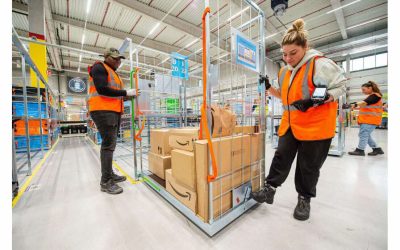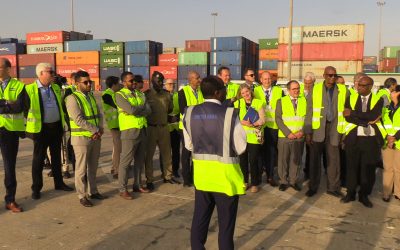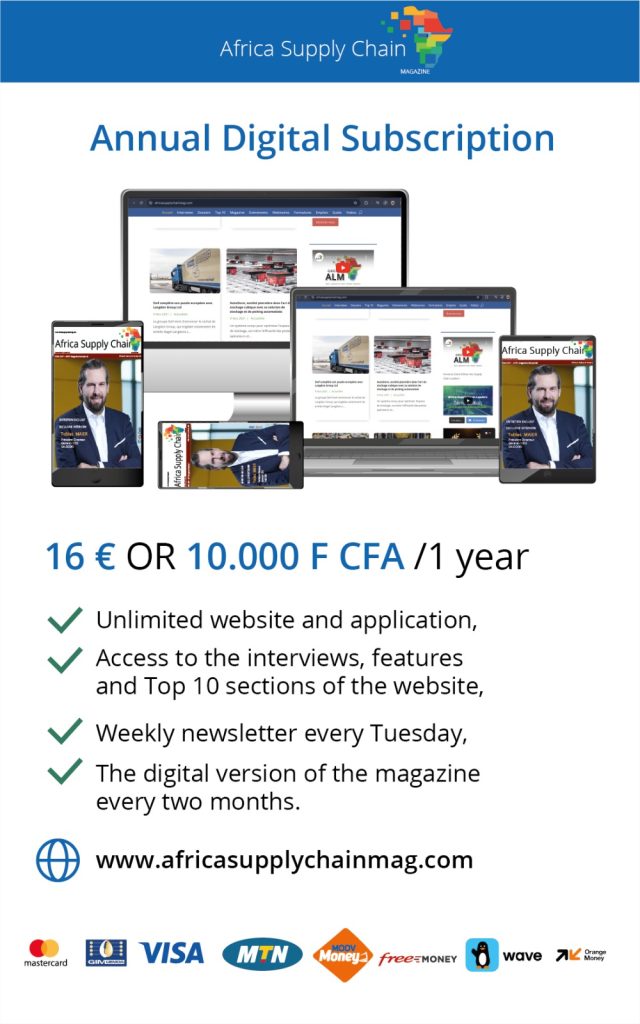Article published in Africa Supply Chain Magazine N°11 (author: Amadou DIALLO)
Every year, the transport sector adds billions of metric tons of greenhouse gases to the atmosphere, contributing the global climate crisis. It is estimated that 16% of global carbon dioxide emissions come from transportation, with 95% of vehicles still using petrol or diesel engines.
It is critical for the mobility industry to switch to greener alternatives to mitigate this impending climate disaster. The good news is that transport chains are willing and equipped to change and adapt to green solutions.
Electrification of transport and clean fuels are playing a key role in sustainable transportation
EVs are helping reduce carbon emissions in urban areas, while also introducing viable battery electric logistics. Equally, more investments in technology for route optimisation to reduce the overall travel distance for vehicles, improved logistics management systems, and fuel-efficient vehicles are all helping reduce carbon emissions.
But technology can be further exploited for fuel-efficient driving, intelligent truck planning to reduce mileage, and using the right number of trucks to do a job and avoid empty returns. These changes may seem minor, but on a large scale, these systems and planning can produce significant results. Our digital road freight platform, Saloodo! is an excellent example of this.
But there is room to harness technology further for fuel-efficient driving, intelligent planning of trucks to reduce mileage and to use the right number of trucks to do a job and avoid empty backhauls. They may seem like small changes, but at scale, these systems and planning can produce significant rewards. A prime illustration of this is our digital road freight platform, Saloodo!. Through this platform, we facilitate the collaboration between transport providers and shippers, optimizing truck utilization. By doing so, we not only ensure secure and reliable transport capacity for our customers in a highly fragmented market in the Middle East and Africa, but also drive efficiency gains in terms of truck utilization and subsequently reduce the carbon footprint of road freight shipments.
Improved design is also playing a part in improving sustainability
Standard vehicle specifications now include innovations such as solar panels and aerodynamic, more efficient designs. The use of ‘tear drop’, long and double decker trailers improve carbon efficiency, without the need to compromise on load capacity.
Sustainable fuels in air, ocean, and road freight can also reduce emissions
Switching last-mile delivery service to using e-vehicles, using bicycles for zero-emission last-mile delivery, alongside other small but consistent interventions such as reducing speed to an optimum 55mph, avoiding idling, and braking and accelerating more smoothly, can cut CO2 emissions.

Since 2007, DHL has reduced its CO2 output in transport by more than 38%
DHL is investing a total of 7 billion euros over the next ten years in measures to reduce CO2 emissions, including the expansion of its zero-emission e-vehicle fleet to 60% for the last mile as well as increasing the use of sustainable fuels in line-haul operations to cover more than a third by 2030.
DHL also delivered the region’s first-ever EV and battery logistics hub in the UAE to handle and store EV material including batteries, charging equipment, and other hazardous goods
This is expected to accelerate the regional shift to EVs and promote clean mobility in the UAE – in line with the country’s sustainability initiatives. In addition to this, expanding the use of rail transport can also support sustainability in logistics in the future. This will ensure continuous CO2 savings while maintaining economic efficiency in the transport sector. The expansion of rail transport reduces traffic jams, road construction and growing freight traffic. It can also address staff shortage issues in conventional road transport – including drivers and ground handlers.
Packaging is another key, but often overlooked, area of sustainable logistics.
According to estimates, they account for almost a third of total plastics production. Despite this huge volume, a report by the World Economic Forum revealed that only 14% of this packaging will be recycled. The problem of plastic waste is exacerbated by the growth of e-commerce, which is expanding at an average rate of 20% per year worldwide.
It’s important to remember that making real progress in the journey towards decarbonization is as much about the small but significant changes every person can make
Instead of viewing sustainable transport as somebody else’s problem and leaving it up to a few people within a business making decisions, it’s time to turn everyone involved into a sustainability advocate.

There are several carbon transparency tools and technologies available to optimize logistics for sustainability and enhance the carbon efficiency of supply chains
As part of our commitment to sustainability, we have developed and integrated these tools into our customer portal, myDHLi. When customers request a quote for a transport on our platform, they are automatically provided with the estimated carbon footprint of the specific shipment. This empowers them to make informed decisions and conveniently choose a sustainable transport alternative with just one click, whether it's for air or ocean freight.
To achieve carbon reduction and decarbonization, we utilize an insetting approach through the use of sustainable biofuels like SAF
This option supports our customers in their journey towards more sustainable logistics. Additionally, myDHLi allows customers to track their emissions at a granular level, even down to individual shipments. We also provide an integrated GoGreen Dashboard within myDHLi, which enables customers to analyze their CO2 emissions and assess their efficiency grades. The dashboard offers different views and filter options for in-depth analysis, providing valuable information to understand the drivers of carbon emissions and identify areas for carbon reduction measures.
As a transport sector, it is crucial that we explore these alternatives earnestly to fulfill our climate responsibility
Furthermore, we strive to offer our customers convenient solutions and support them in achieving their individual sustainability goals. Only through a collective effort can we make transportation and logistics more sustainable.
Amadou Diallo, CEO DHL Global Forwarding Middle East & Africa



















0 Comments